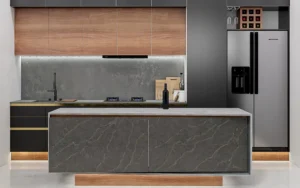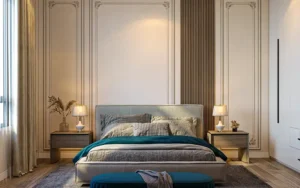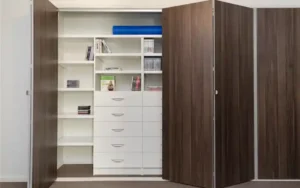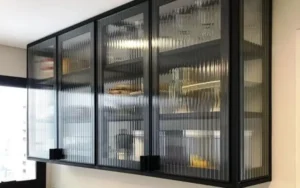MDF board (Medium Density Fiberboard): The Ultimate Guide for Interior Design Applications
In This Post. All about MDF Board.
- MDF Board?
- Common Names.
- Manufacturing Process.
- Primary Applications.
- Advantages.
- Limitations.
- Recommendations
Medium Density Fiberboard (MDF Board)
Medium Density Fiberboard (MDF) has revolutionized interior woodworking and design since its introduction to the market. This engineered wood product represents a perfect balance between functionality and aesthetics, offering exceptional smoothness and workability that makes it a favorite among craftspeople and designers.

Unlike natural wood or plywood, MDF’s uniform composition and density make it particularly suitable for projects requiring precise detailing and a flawless finish, establishing it as a cornerstone material in modern interior design and furniture manufacturing.
MDF Board Common Trade Names and Grades
The versatility of MDF Board is reflected in its various industry designations:
- MDF Board: The most commonly used term in the construction and furniture industry.
- Fibreboard: A general term encompassing the material’s basic composition.
- Engineered Wood Panel: A technical classification highlighting its manufactured nature.
- Custom Grade Panel: Often used in architectural specifications.
- Composite Wood Board: A term emphasizing its engineered nature.
MDF Board Manufacturing Excellence
The journey begins with the careful selection of wood fibers from both hardwood and softwood sources. These materials undergo a precise breakdown process that creates uniform wood fibers, which are then cleaned and refined to ensure consistency in the final product.
The refined fibers are combined with a carefully formulated mixture of wax and resin binders. This combination is crucial as it determines the board’s final properties, including its strength, moisture resistance, and fire-retardant capabilities. The mixture is then formed into a uniform mat, which undergoes a controlled pressing process under specific temperature and pressure conditions.
Different variants are produced through modifications to this basic process:
- Standard MDF: The basic form, suitable for most indoor applications
- Moisture-Resistant MDF: Incorporates specialized resins and is typically green-colored for easy identification
- Fire-Resistant MDF: Contains fire-retardant additives and is usually colored red or blue
- Ultra-Light MDF: Manufactured with reduced density for lighter weight applications
- High-Density MDF: Compressed under greater pressure for enhanced strength and durability
Greenply Industries, Century Plyboards, Kitply Industries and Sarda Plywood Industries are the major MDF Board manufactures in india
MDF Board Key Applications
MDF Board versatility makes it an invaluable material across numerous interior applications. In furniture manufacturing, it serves as the primary material for painted pieces, offering a smooth, defect-free surface that accepts finishes beautifully. The material’s consistency makes it particularly suitable for:
Cabinet Manufacturing: MDF Board smooth surface and stability make it ideal for kitchen and bathroom cabinetry, especially when a painted finish is desired. Its uniform edge profile allows for detailed routing and molding work that would be challenging with other materials.
Architectural Details: The material excels in creating sophisticated architectural elements such as baseboards, crown moldings, and window casings. Its consistency allows for intricate profiles while maintaining clean, sharp edges.
Display and Retail Fixtures: Commercial applications benefit from MDF Board ability to create seamless, professional-looking displays and fixtures that can be easily customized and finished to match any design scheme.
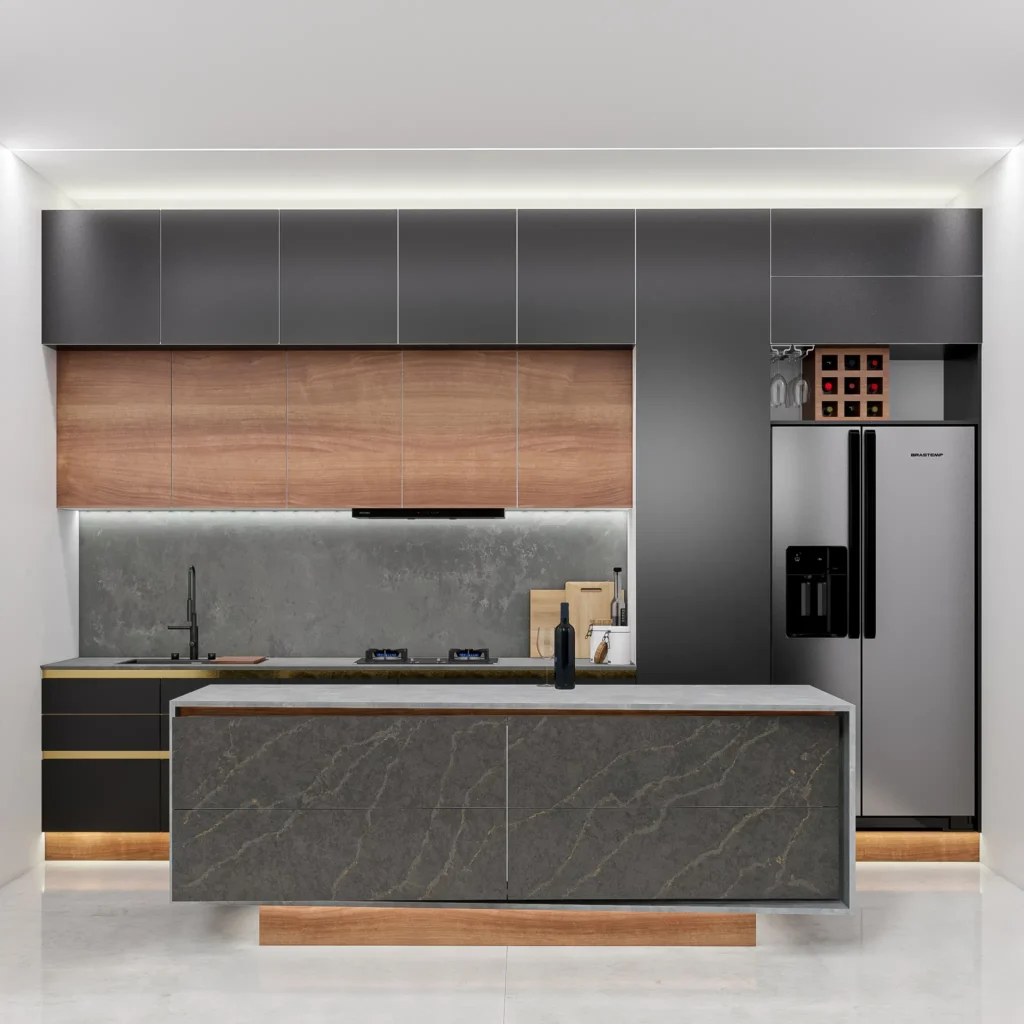
Design Your Dream Interior: Explore Our Modular Interior Design Services
Launch Your Modular Interior Journey with Align Designs: Find the Best Plywood and Hardware Fittings in Our Curated List.
✔️Free 3D Designs
✔️Color selection
✔️45 Days Deliver
✔️15 years Guarantee
MDF Board Advantages
Understanding MDF Board’s strengths and weaknesses is crucial for successful application in interior design projects. The material’s exceptional smoothness and consistency make it perfect for painted finishes
While its uniform density allows for intricate cutting and carving without the risk of splitting or chipping that often occurs with natural wood.
Understanding Limitations of MDF Board
However, proper material handling and installation techniques are essential to address its limitations. While moisture-resistant variants are available
All MDF Board requires careful sealing and finishing to ensure longevity, particularly in environments with varying humidity levels.
Home Interior Design Recommendations
or interior applications, MDF Board offers excellent design possibilities
- Kitchen and Bath Cabinetry: Utilize moisture-resistant MDF for painted cabinet doors and drawer fronts, ensuring all edges and surfaces are properly sealed.
- Built-in Storage Solutions: Design custom storage units that maximize space while maintaining a clean, professional appearance.
- Decorative Wall Treatments: Create sophisticated wall panels and wainscoting that add architectural interest to any space.
- Furniture Design: Develop custom furniture pieces that feature complex profiles and seamless painted finishes.
Professional Recommendations
To maximize MDF Board potential in interior design projects, consider these essential guidelines:
Material Selection and Preparation:
- Choose the appropriate MDF variant based on the specific application requirements
- Always seal all surfaces, including edges and hidden areas, particularly in moisture-prone environments
- Use appropriate primers and finishes designed specifically for MDF
- Implement proper dust collection and ventilation during cutting and sanding
Installation Best Practices:
- Pre-drill holes to prevent splitting when using fasteners
- Use appropriate adhesives designed for engineered wood products
- Allow for proper acclimation before installation
- Consider weight limitations when designing wall-mounted pieces
Finishing Techniques:
- Apply edge sealer to all cut edges before primary finishing
- Use high-quality primers designed for MDF
- Sand between coats for optimal finish quality
- Consider spray application for the smoothest possible finish
The success of MDF Board applications in interior design largely depends on proper material selection, careful preparation, and appropriate finishing techniques. When these factors are properly addressed, MDF provides an excellent medium for creating sophisticated, durable, and aesthetically pleasing interior elements that enhance any space.

